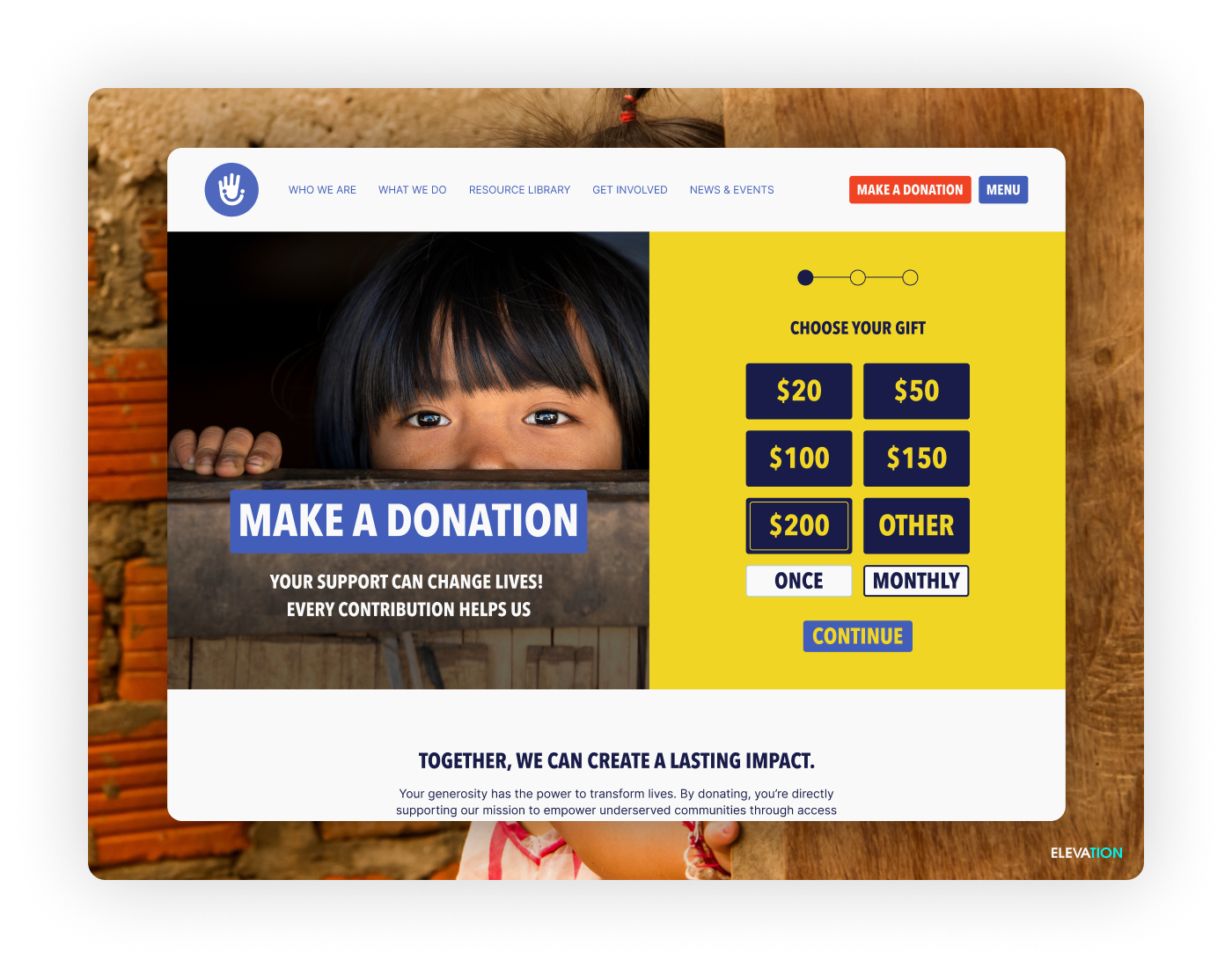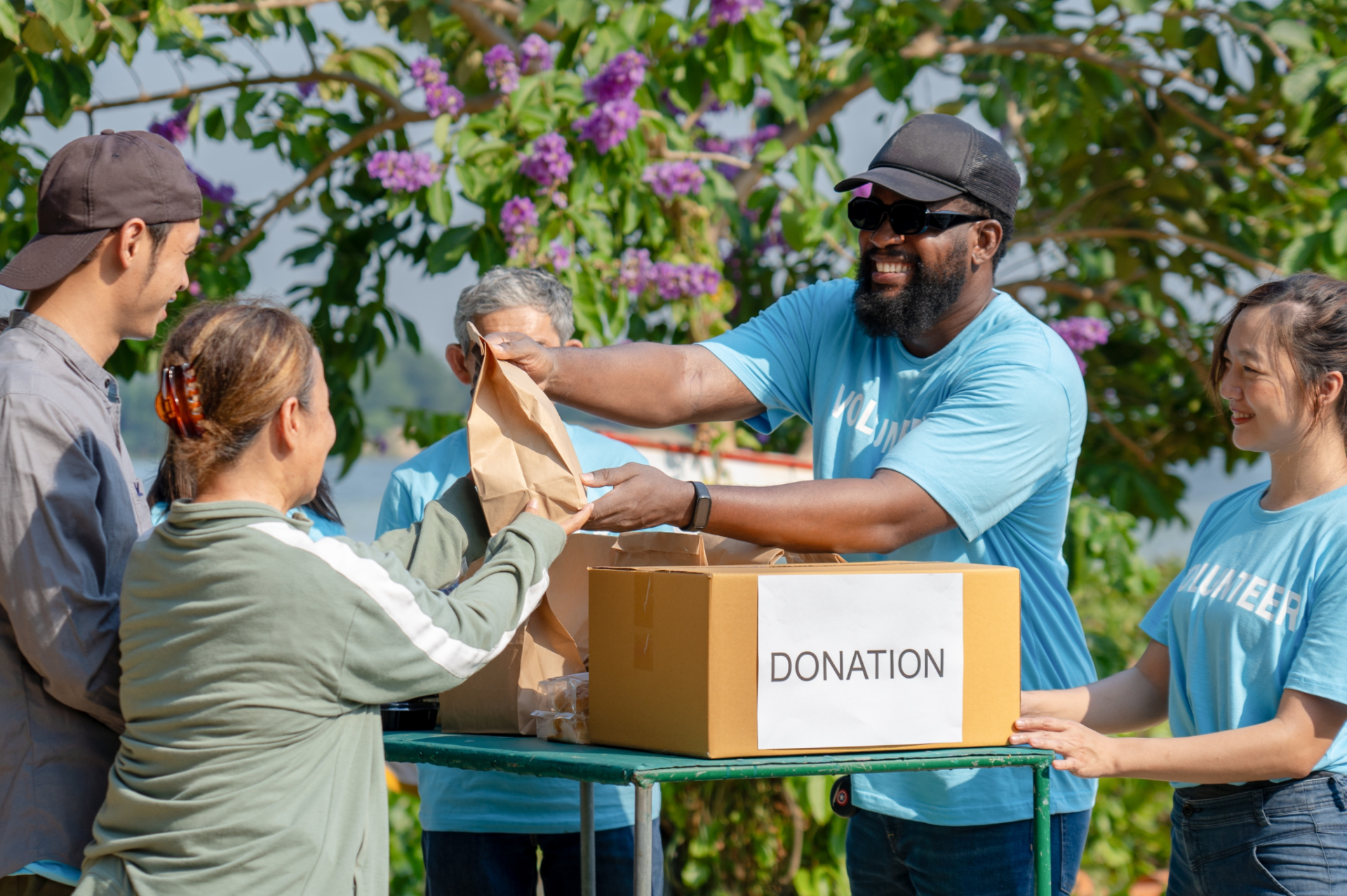How much do you know about your nonprofit’s supporters? Chances are, you already have a lot of information about your donors and are sitting on a treasure trove of useful data. If you have a well-organized donor database, you should be able to access a supporter’s contact information, engagement history, and other details with just a few clicks.
Are you using this data to its full potential? Your supporter data is a valuable resource to use as you plan future events, build strong relationships, and of course, improve your fundraising strategy. But simply gathering information won’t have much of an impact. It’s important to analyze the available data effectively and use it to drive your operations and decision making.
When used effectively, data can inform your fundraising efforts to yield more success and money for your mission. Thanks to modern fundraising tools, it’s easier than ever to collect and use data to create stronger campaigns and better appeals. Nonprofits can make the most of technology to save time and fundraise more effectively.
From my experience at QGiv, I’ve learned a few tips and tricks that can help your organization take advantage of data for more profitable fundraising. These strategies include:
- Assessing historical donor data.
- Using a well-integrated tech stack for optimal data flow.
- Creating supporter segments for targeted appeals.
- Personalizing communications.
- Understanding supporter preferences.
A data-informed fundraising strategy will more effectively engage supporters and ultimately have a positive impact on your mission. First, let’s look at the kinds of data you should have on hand, and then explore further strategies leveraging that data.
1. Assess Historical Donor Data
The first step to using your data more effectively is understanding the information you have available. When it comes to fundraising, it’s definitely true that knowledge is power!
You’ll want to confirm that you have the most important statistics at your fingertips. Your fundraising software may even be able to pull customized reports that analyze and help you visualize your data quickly.
While the metrics you can track are nearly endless, here are a few of my favorite fundraising data points to keep in mind:
- Number of new donors. Measuring donors who have given to your organization in the last three months can help show the success (or lack thereof) of a recent campaign.
- Number of lapsed donors. These are donors who have given to your nonprofit before, but not in the last year.
- Number of at-risk donors. These are supporters who have given to your organization before, but haven’t given in the last 9 months. They are at risk of moving into the lapsed donor category in the near feature. Identifying these individuals can help you prioritize your outreach.
- Donor retention rate. Understanding your donor retention rate, or the ratio of donors who continue to give to your nonprofit year after year, is crucial. This is a key indicator for comparing your fundraising performance to other nonprofits. If your donor retention diminishes, it can be a red flag that your stewardship strategies need an overhaul. Another way of measuring this is churn rate, which is merely the inverse of your retention rate.
- Donor lifetime value. This is the average dollar value associated with each donor. It can be calculated by looking at the average amount a donor gives each year adjusted for churn rate. When combined with donor acquisition cost, this metric gives you a strong idea of how efficient your fundraising efforts are. For example, if your average acquisition cost is $300 but your average lifetime value is $250, you need to make changes.
These are just a handful of the data points you may want to consider when developing your fundraising strategy. You’ll also want to consider recent campaign-level engagement data, website traffic, and other organizational metrics.
2. Use a Well-integrated Tech Stack for Optimal Data Flow
Your nonprofit likely relies on a variety of software solutions to pursue your mission. Those solutions make up your “stack”—the series of tools you use to do your job. Things you might have in your stack include a fundraising platform, CRM, email provider, and bookkeeping software. While having multiple comprehensive fundraising tools in your “stack” can help you run your organization, it can be challenging to make multiple tools work together…
If your tools don’t work well together (or if it takes a lot of manual data entry and report-running to get the information you need), it can be a massive obstacle for fundraising. At best, you dedicate some time to manually tabulating data from different sources, but at worst, you waste long hours and make errors.
Your fundraising team will be more efficient with a well-integrated tech stack. Compatible software solutions should allow data to freely flow between themselves. This will eliminate manual data entry, reduce errors, and allow you to draw insights across your organization.
Begin by making sure your donation tool and other fundraising software can integrate with your CRM or donor management system. As discussed in Qgiv’s guide to online fundraising, centralizing your donation data in your CRM provides a more comprehensive (and informative) look at how your campaign is performing.
As another example, consider how matching gift data can be used to maximize fundraising revenue. If your donation tool integrates with a matching gift database, supporters can more easily see if they are eligible for a matching contribution from their employer. You can even use an embedded searchable database that uses supporter contact information to identify and contact unclaimed matching gift opportunities.
Depending on the nature of your organization, you also may want to consider integrations with your volunteer management software, board management software, event registration software, or anything else you rely on regularly.
3. Create Supporter Segments for Targeted Appeals
We’ve probably all received an end-of-year nonprofit thank-you email that included a line like, “Whether you volunteered with us, attended an event, or made a donation, we’re grateful for your support.” While this kind of communication is better than no thank you at all, it reveals that the sender has very little idea of who is reading the email. In other words, they aren’t using donor segmentation.
DNL OmniMedia defines donor segmentation as, “the act of organizing the donors in your database into groups— segments— based on their shared characteristics.” You can use these segments to specify your fundraising efforts.
For example, you can contact different supporter segments using different methods, choose the right amount for your fundraising ask, and of course, send the right kind of thank-you letter.
Create these groups based on any characteristic available in your donor database. Here are a few common examples:
- Demographics. This includes basic traits like age, gender, and geographic location.
- Engagement type. Separate your donors, volunteers, board members, or other categories.
- Gift type. Dividing your donors by type of gift (major donor, year-end donor, first-time donor, etc) can help your fundraising asks be more well-received.
Creating targeted messaging for each segment helps ensure each supporter finds the content relevant and useful. Nobody wants to receive an email that simply doesn’t apply to them! With well-crafted segments in place, your campaigns will be more engaging and lead to a higher conversion rate.
4. Personalize Communications
Another way to use data to improve your communications strategy is to incorporate personalization. By using your supporter information in your outreach, each donor will feel more seen, empowered, and appreciated as an individual.
The most obvious way to personalize your email marketing is by including the supporter’s first name in the greeting or subject line. And this is popular for a reason—it works! Studies show that emails that have personalized subject lines are 26% more likely to get opened. Marketing automation tools make it simple to personalize outgoing emails without the laborious process of doing it by hand.
However, you can also go beyond this to craft emails that are even more personal. Try including personalized information like a past donation amount, volunteer history, or a detail specific to your organization (like a supporter’s pet’s name). You can also use information about a past donation to set a suggested donation amount in a new fundraising ask.
These details will help keep the message donor-centric. You want the donor to feel like they, as an individual, can make (or have made, in the case of thank-you emails) an impact on your organization.
5. Understand Supporter Preferences
All supporters have different tastes for how they want to interact with your organization. These preferences apply both to how they give to and communicate with you.
For instance, many donors may enjoy the convenience of giving online, but others prefer the more personal experience of a phone or in-person conversation with someone on your team. It’s important to keep these preferences in mind, especially as donation size increases!
As our guide to virtual fundraising further discusses, online fundraising tools can make it easier to accommodate different preferences for payment options. Top nonprofits can now accept anything from electronic checks to Apple Pay and Venmo, so supporters can give in whatever way they find most comfortable.
Additionally, your donors may have different preferences for how they receive marketing content from your nonprofit. While some may be very social media savvy, others may prefer direct mail.
These preferences are also an excellent factor for segmenting your donors. This way you ensure you’re reaching out to each group in the appropriate way. This creates more relevant and effective messaging, and can even help you save time and money by skipping vina4d communications methods that you know will fall flat.
If you don’t already have this data on hand, it’s worth considering asking for feedback from supporters with a quick survey. Your donors will appreciate the effort you’re making to give them a more personalized relationship with your organization.
The more your nonprofit knows about your supporters, the better equipped it will be to interact with them more successfully. These five data-driven strategies will help your organization raise critical funds for your organization.



